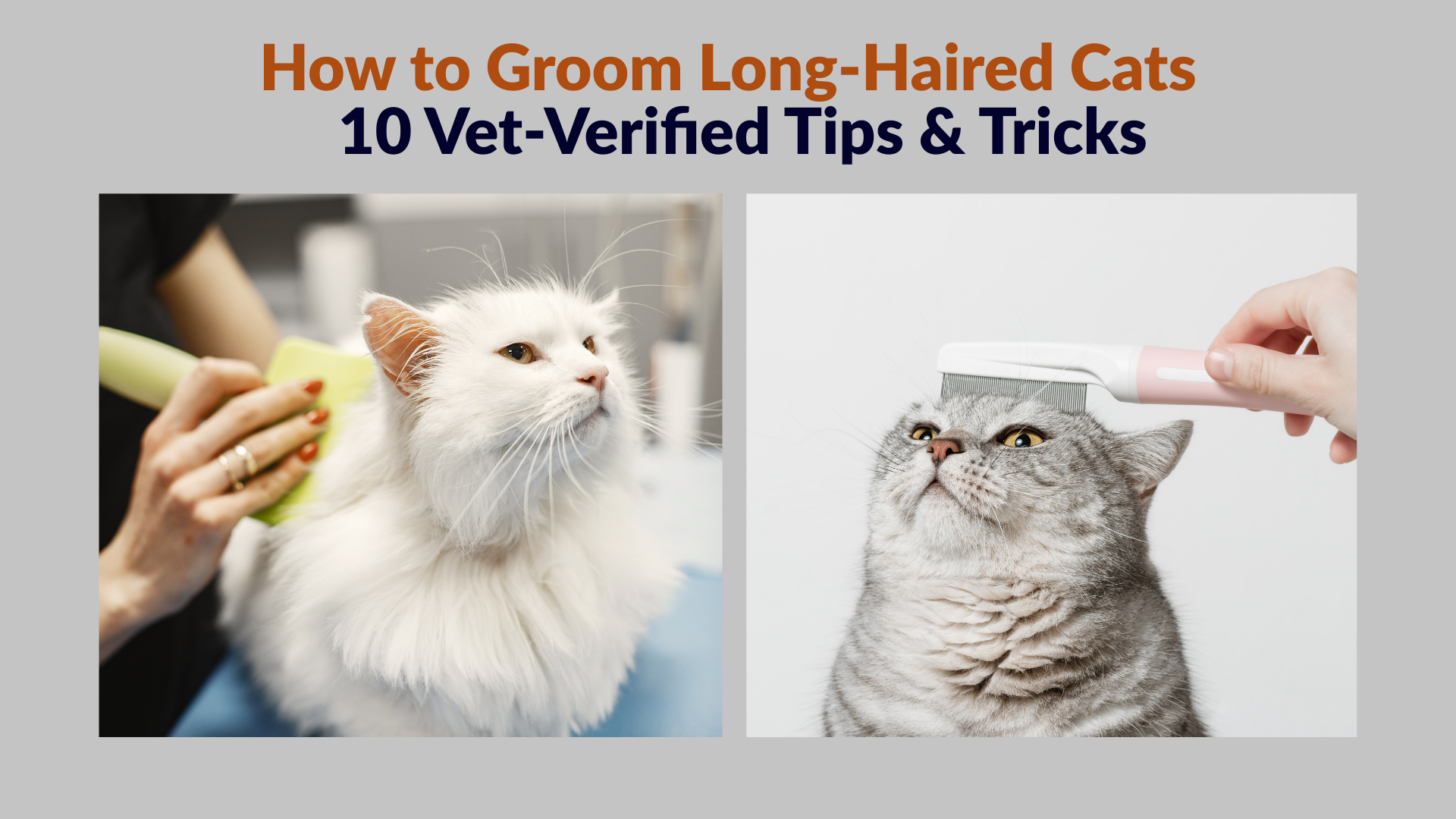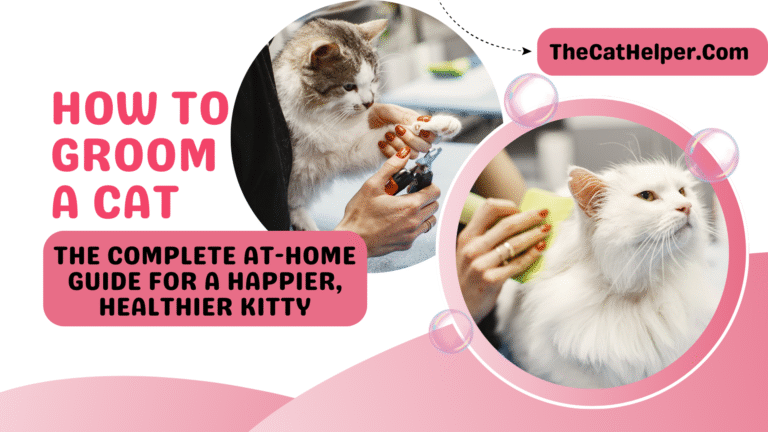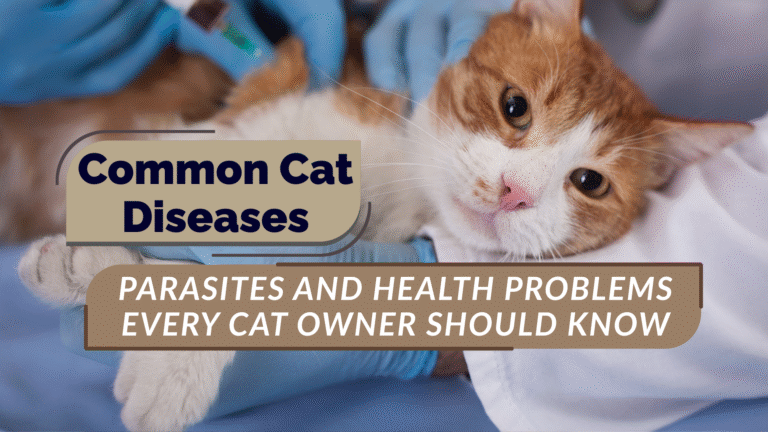How to Groom Long-Haired Cats: 10 Vet-Verified Tips & Tricks
If you’ve ever owned a long-haired cat, then you know the battle already: the perpetual tumbleweeds of fur, the hidden mats that crop up in the middle of the night, and that one disgruntled scowl your cat reserves for you when you pick up the brush. Long-haired cat grooming isn’t so much about making your cat a showstopper it’s making your cat healthy, comfortable, mat-free.
As someone who’s cared for a few fluffy cats (a particularly obstinate Maine Coon, for instance, who thought brushes were some kind of medieval rack of torture), let me tell you this: brushing is not an affectation, it’s an expression of love. And the best part about it? With the right gear, a regimen, and a pinch of patience, you can turn grooming into a bonding ritual instead of an experience.
In this article, I’ll provide you with 10 veterinarian-approved tricks and tips to keep your long-haired cat’s coat soft, shiny, and mat-free to the best of its ability without driving you crazy, of course.
Why Long-Haired Cat Grooming Matters
Long-hair varieties like Persians, Ragdolls, and Maine Coons are beautiful, but their beautiful coats require a bit of extra TLC. Unless they are groomed daily, their hair may:
-
Mat easily — uncomfortably tugging on the skin.
-
Trap dirt and litter — with accompanying hygiene issues.
-
Cause hairballs — as cats swallow unneeded fur in grooming.
-
Hide skin problems — such as fleas, rashes, or hot spots.
In brief: grooming is a choice for health.
10 Vet-Verified Tips for Grooming Long-Haired Cats
1. Start with Daily Brushing (Yes, Daily!)
The golden rule of long-haired cat grooming: Brush every day. Not a spa day full-service it can be 5–10 minutes. Brushing every day prevents mats from occurring and lessens shedding.
Pro Tip: Go slow and do light strokes and brush for treats or playtime. Your cat will even learn to expect the brush (no promises, though).
2. Choose the Right Brush
Not all brushes are created equal. For long-haired cats, the vets recommend a combination of:
-
Wide-toothed comb — great for detangling.
-
Slicker brush — helps remove loose undercoat.
-
De-matting tool — for stubborn knots.
Avoid using cheap plastic brushes that pull at fur they will stress grooming more than it needs to be.
3. Detangle Mats Gently
Should you find a mat, don’t worry and don’t try to reach for scissors (garden-variety cuts are too tempting). Instead:
-
Gently tease out the mat with your fingers.
-
Use a detangling spray (one formulated for cats, never dogs).
-
If too snug against the skin, leave it to a professional groomer.
Remember it’s like untangling jewelry patience, not strength.
4. Make Grooming a Positive Experience
Your cat should never consider brushing as punishment. Create a calm atmosphere:
-
Select a quiet area where distractions will not occur.
-
Brief grooming sessions at first.
-
Reward with treats they love or chin scratches afterwards.
After time passes, grooming is an expression of love, not drudgery.
5. Don’t Forget the “Problem Areas”
Certain areas on your cat’s body are problem areas for grooming:
-
Behind the ears (suspension-prone to mats)
-
Armpits (furs rub up against one another when walking)
-
Belly (tender be extra careful)
-
Rear end & paws (hygiene-related fur trims are very common)
Trims of a few inches can be done by a couple of small round-tip safety scissors (or grooming session at the groomer).
6. Bathing: Rare, but Sometimes Necessary
Cat themselves can be cleaned, but long-haired ones must be bathed occasionally particularly with something sticky or smelly tangled in their fur.
-
Employ feline shampoo only (human shampoo is too strong).
-
Clean thoroughly to avoid residue.
-
Bathe sparingly no more than every 4–6 weeks.
Pro tip: Add a non-slip mat to the tub to keep your cat safe.
7. Check for Skin & Health Issues
Grooming is detective work also. Brushing, look for:
-
Fleas or ticks
-
Dry patches or dandruff
-
Redness or irritation
-
Lumps or bumps
Getting into trouble early = sooner treatment and less work for your vet later.
8. Nail Trimming Matters Too
While not technically “coat grooming,” nail care is part of the package. Long claws catch on rugs (or on you). Acclimate your cat to getting their nails trimmed every few weeks.
9. Hydration & Diet Support Coat Health
Healthy fur starts from the inside out. Omega-3s (in fish oil) and good water consumption can make a real difference in your cat’s coat. A shiny coat generally means a healthy balanced diet.
10. Know When to Call in the Pros
Some mats are simply too large or too close to skin for home grooming. A professional groomer or a vet will safely shave out trouble areas or give your cat a sanitary clip. Well worth the money, believe me.
FAQ: Long-Haired Cat Grooming
How often should I brush my long-haired cat?
Daily is best. It prevents matting and reduces shedding. A 5-minute brush can make a huge difference.
What’s the best brush for long-haired cats?
A wide-tooth comb/slicker brush combination is ideal. Add a de-matting tool for stubborn knots.
Can I cut out mats myself?
Not worth it fragile cat skin and one misstep and they’re hurt. Try gentle detangling, and if that fails, find a groomer.
Do long-haired cats need baths?
Rarely. Bathe only when absolutely necessary (i.e., sticky situations). Over-bathing dehydrates their coat.
How can I make grooming less stressful for my cat?
Go slowly, keep it short, reward positively, and brush in a quiet area. And treats are useful too!
When should I see a groomer or vet?
If you’re being over-familiar with the skin due to mats, if your cat is distressed, or if you notice skin issues when brushing, call in the professionals.
Final Thoughts
Long-hair cats might seem high-maintenance, but having good grooming habit under your belt, their coat is second nature. Think of grooming as more than coat maintenance, bonding, health checking, and stress relief all rolled into one.
Your cat will never thank you in so many words, but that divine purr (or even a somewhat less deathly glare) is all the proof you’ll ever need that you’re getting it right.
So grab that brush, some treats, and recall: every stroke is a stroke of love.







